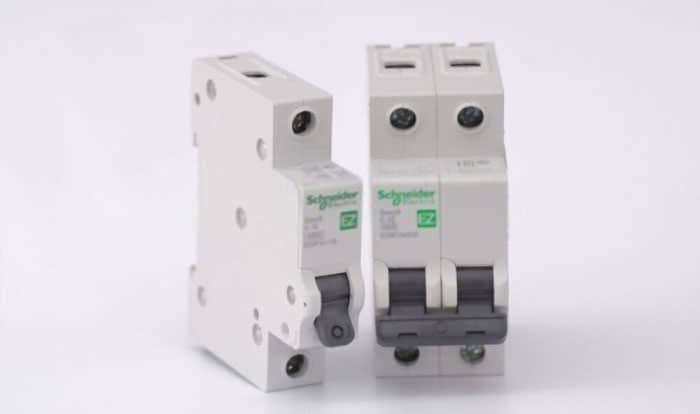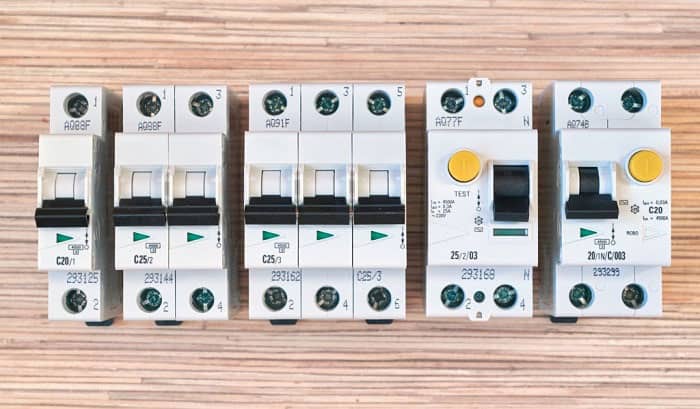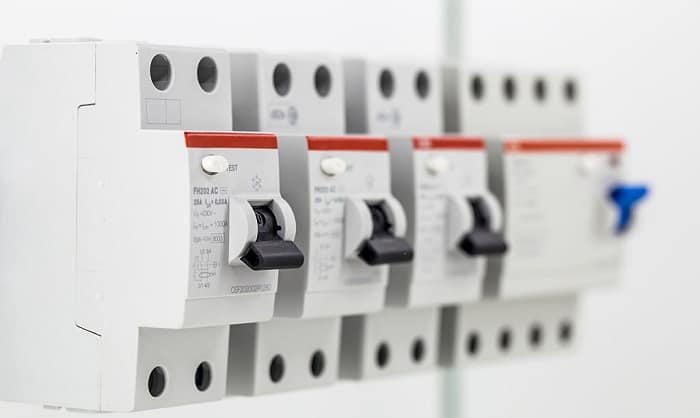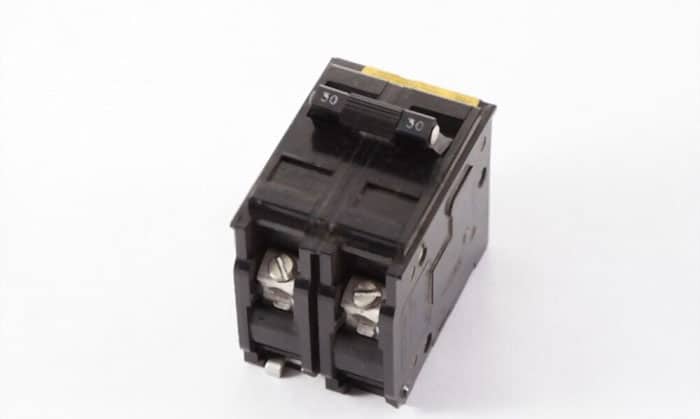Do you want to know the difference between a single pole vs double pole breaker? And why does your electrical panel sport both types of breakers?
Only having one sort of circuit breaker will undoubtedly be insufficient for your home’s electrical requirements. Assume you have a single pole breaker circuit in your breaker box. You’ll be limited to using only your lights and a few low-power gadgets that run on 120 volts. You can only run high-power appliances rated at 240 volts with double pole breakers.
Read this complete article to learn more about the difference between single pole and double pole breaker.
Table of Contents
Double Pole Vs Single Pole Breaker
The main difference between a single vs double pole breaker is their power capacity.
- Single-pole breakers are typically used for low-power appliances, as they can provide 15 to 20 Ampereges and 120 Volts.
- Double-pole breakers protect heavy machines, as they can provide 20 to 60 Ampereges and 240Volts.
You’ll need to install both breaker types in your electrical panel to run household appliances and lighter machines simultaneously. Nevertheless, despite their different capacities, these breakers have the same function: to keep any circuit in your home safe. Both breakers immediately trip when they detect a short or overload in a circuit.
Aside from standard circuit breakers, you can also find these single and double-pole breaker designs in plug-on neutral circuit breakers. Both standard and plug on neutral breakers use a single hot wire for single-pole and two hot wires connected for double pole breakers, but they have different neutral installations.
If the standard circuit breaker uses one neutral wire that you need to connect to the bus bars, the plug on neutral breaker does not use a single neutral wire.
Aside from the single neutral wire connection, a plug on the neutral breaker has easy clip features to connect the neutral link directly to the bus bars.
Additionally, there are also called Ground Fault Circuit Interrupter (GFCI) and Arc Fault Circuit Interrupter (AFCI) for single-pole and double pole circuit breakers. These breakers have advanced features that help your circuit be much safer.
However, these breakers are slightly different from the standard breaker and plug on a neutral breaker due to their pigtail wire connecting to the ground bus bar.
The GFCI breaker is designed to immediately cut the electricity of the circuit when it detects a ground fault. This feature protects against electrical shock or electrocution.
On the other hand, the AFCI breaker detects an arc fault like overheated wiring and short circuit that may fire and damage your property.
There are other types of circuit breakers that have more than two poles. There are three pole breakers, triple pole and neutral, and four poles. These breakers, including TP, TPN, and 4P, have different features and functions. You may not find some of this in a home electrical circuit as it is primarily used in an industrial installation with higher line voltage.
What Is a Single Pole Breaker?
Generally, a single pole circuit breaker is a type of breaker that has a size that fits in one slot of your panel.
It has one switch and only needs to connect two wires, one for the hot bus bar and one neutral wire. This breaker is rated 15 to 20 amps for a single circuit that provides 120 volts of power service.
A single pole breaker is mainly used for the general lighting circuit of houses. Furthermore, it can also be installed in a standard outlet with a two-slot outlet receptacle. It can be used for some lower voltage circuits to power small appliances rated 120 or 110 volts but not for a higher voltage like 220 volts hair dryers.
What Is a Double Pole Breaker?
Double pole circuit breakers are breakers that occupy two single pole breakers slots. It has a bridge switch and consists of two hot buses and one neutral wire as the third wire for its wiring system.
It is also rated 20 to 60 amps and primarily has a 240-volt single circuit service to power most electrical outlets for your high-power appliances like air conditioners, electric ranges, hairdryers, and more.
It indicates that the 2 pole breaker generates 240 volts of power by combining two single circuit breakers. Each terminal of a double breaker is protected by half of the breaker. The bridging switch of the breaker holds a great feature that protects the whole circuit.
For example, if one side of the breaker trips, the other half of the double pole breaker will also trip promptly to safeguard your circuit.
If you notice a double pole circuit breaker that only has one switch, that’s because its bridge connection is already inside the circuit breaker body, hidden from view. This double pole breaker with one switch also has the same function and features as the standard double pole breakers
This video by Circuit Breaker Wholesale will also give you a better understanding of the single pole and double pole breakers. Though the video is short, he discusses all the basic information about the two circuit breaker types.
What Is Load Center?
The load center is where you’ll install your circuit breakers and control your circuit’s primary connection. Current load center ratings typically range from 40 to 600 amps for residential applications. It makes use of plug-in circuit breakers that can be used as single pole or double pole breakers.
It is also in charge of delivering electricity to each circuit in your home’s electrical system. Aside from the safety a circuit breaker provides, you are also protected by the load center by enclosing all branch circuits and preventing them from contacting each other.
However, load centers limit your breaker installation. That’s because you can only install a breaker that will not exceed the rating of your main circuit breaker. Installing a much higher amp rating than the main breaker may lead to circuit overloads and damage your whole electrical system.
You can also find a panelboard that’s slightly different from typical load centers. These Panelboards retain UL and NEC breaker panel standards, but they use bolt-on type breakers instead of the snap-on type found in your usual electrical panel.
Conclusion
You don’t need to know what is the better one between single pole vs double pole breaker since they are both essential in any electrical system. Furthermore, a 2 pole vs 1 pole breaker is only an issue when you need to install a circuit that needs to supply 240-volts.
So, do you now have a better understanding of single and double-pole breakers? Do you have some follow-up questions that are related to this topic? Share the in the comments below!

I am Edwin Jones, in charge of designing content for Galvinpower. I aspire to use my experiences in marketing to create reliable and necessary information to help our readers. It has been fun to work with Andrew and apply his incredible knowledge to our content.





